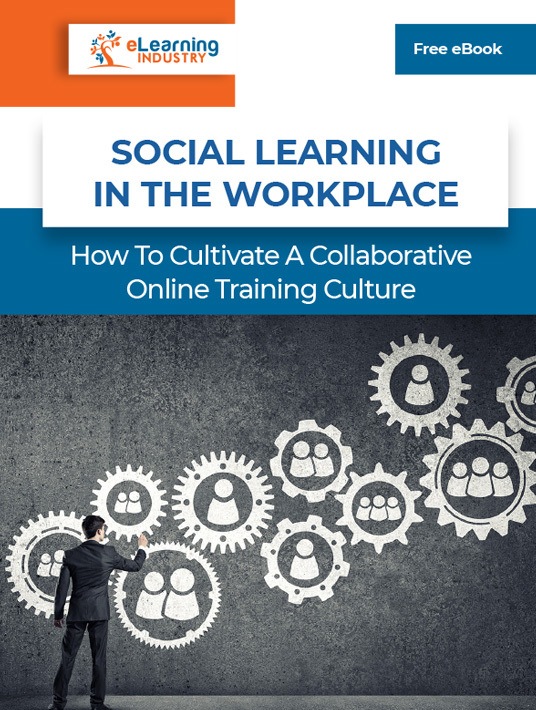Fundamental Principles Of The Social Learning Model You Should Know
One of the most wonderful things about being alive during the digital age is unlimited access to knowledge. Though some might argue this is a blessing and a curse. We have the ability to watch videos to learn how to perform tasks or read blog posts that allow us to benefit from others’ mistakes. We can also collaborate with peers from around the globe to collectively problem-solve and identify areas for improvement. These are all modern takes on the social learning theory. We observe, mimic behaviors, and ruminate on the subject somewhere in between. However, there’s more to it than that. So, let’s look at the 6 core principles of Bandura’s social learning theory and beyond.

1. Attention Is A Prerequisite
Online learners must be able to focus on their online training and observe behaviors without any external distractions. They only way for them to retain information is by actively assimilating the ideas and concepts. For example, to watch a video and soak in all the steps so they can repeat them in the workplace. Bear in mind that the human brain is more likely to remember info which is interesting or real-world centered. Thus, online learners can apply the concepts on-the-job to overcome challenges and improve performance habits. Lastly, ensure that your online course design isn’t the problem. Cluttered layouts, big blocks of texts, and other distractions serve as a mental block. Employee training participants are unable to concentrate on the task at hand because the online course causes cognitive overload.
2. Observation Comes Before Retention
The secret to social learning theory success is to observe behaviors or reactions first, then rehearse those models before acting them out. This involves a variety of mental processes, from coding the information in a way that’s easy to remember to indexing images in our brain databanks. Observation is just the first step, as we must be able to assign meaning to the actions and figure out how they fit into our personal lives. For instance, how the employee training participant will use favorable behaviors to carry out their job duties or avoid compliance breaches. Context is the key to knowledge retention.
3. Reproduction Should Be Automatic
The next social learning principle to consider for your online training program is reproduction. Employees reproduce behaviors and skills they learned through online training. Nonetheless, they must be able to rehearse and practice in order to hone their talents. Ultimately, reproducing the same responses they have observed should become an automatic process. They won't even have to think about how to perform the task because it comes as second nature. Granted, there’s a lot of work that goes into this, such as mimicking behaviors, time and again, to identify areas for improvement and adjusting the steps slightly to suit their job roles.
4. Outcomes Must Be Practical And Personal
The social learning model is one of the most personalized approaches because it hinges on individual meaning. Online learners are more likely to follow the example and improve behaviors if it means something to them, if the outcomes align with their own professional pursuits, or benefit them in some way. Even if it’s just to prepare for a challenge they’ve never faced or build self-confidence. Outcomes must be practical and based on real-world values, instead of theoretical applications that don’t hold any merit on the job.
5. Status Matters
Another principle that goes beyond the main pillars of social learning theory is status. Online learners adopt behaviors from those they admire or respect, rather than simply copying a stranger who claims that the actions have practical applications. The nature of the task must also be worthy enough to retain for later use. In other words, humans aren’t merely robots who remember everything and anything they learn in online training. There has to be a framework in place and every behavior or outcome must be logical. To illustrate this point, imagine a live event that features random guest speakers who don’t have much experience in the industry, and your employees have never heard their names. You can’t expect employee training participants to stop what they’re doing and give the presenter their full attention, let alone commit everything they say to memory. Instead, invite managers and other team leaders to host the session because employees look up to them and respect their opinions.
6. Motivation Is A Must
There’s one thing that underlies every social learning model principle. Employees must have the motivation they need to actively participate and assimilate the information. There are different ways to achieve this motivation. First, employee training participants might watch someone performing a task that achieves the best outcome. Then, they’re motivated to repeat the same steps because there’s no risk involved. Secondly, they may be looking for recognition, either from their peers or higher-ups. The last form of motivation is the ultimate goal: intrinsic drive. Employee training participants improve performance and build vital skills for personal reasons. This occurs because they know it will make them more productive on the job and they can contribute to the organization more effectively. It’s not for a pat on the back or to one-up their peers.
You don’t have to abide by all of Bandura’s social learning theory principles in your strategy. Likewise, you can expand on social interactivity and modeling to enrich the experience and cater to personal preferences. However, it does provide you with a solid foundation to improve performance behaviors and encourage change within your organization. So, grab their attention, focus on practical outcomes, and boost their motivation through gamification, application, and engagement.
Wondering what social learning is and how you can implement it in the workplace to motivate employees, facilitate knowledge sharing and talent development? Download our eBook Social Learning In The Workplace: How To Cultivate A Collaborative Online Training Culture and get to expose all the common myths around social learning!

